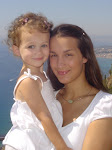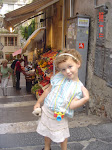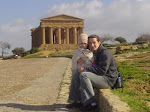Before reading chapter two I asked myself what group I considered myself apart of, I am a member of my family therefore I thought I would write about what makes me a member and how it translates into a folk group. After reading the chapter I realized throughout my life I have been apart of several folk groups and could identify with those mentioned in the chapter; “family, school, and occupational groups” (44). Although the occupational group was one that was constructed formally with many guidelines and rules, it also encompassed aspects of informal lore which enables it to be included into a folk group.
First and foremost I was born into my family, which holds many traditions, sayings, and stories. A tradition that has held strong for many years is the tradition of staying overnight on Christmas Eve at the home of my maternal grandparents. I remember as a little girl watching movies and making memories on Christmas Eve and waking up early, before sunrise, to the family room filled with presents under the tree. All of the grandchildren would sleep in sleeping bags on the floor in the family room with the tree lights lit over night to help Santa find his way. When I was six or seven years old I saw Santa in the middle of the night putting presents under the tree. I told everyone the next morning, and they said it was amazing and they believed me, jokingly. Years later, I saw a picture of my grandmother dressed up in a Santa costume and put the pieces together, she confessed and now it is a story told every Christmas.
School is another group I can associate myself as being a member of through extracurricular activities. Although it was years ago the association with cheerleading, basketball, and cross country is something I was once apart of and will remain connected to through the memories of camps, songs on the bus traveling to away games, nicknames, and jokes told. I was also crowned Homecoming Queen my senior year and was intiated into the tradition of crowing the queen which identifies me into a small group of currently only forty one women.
The occupational group I was a member of was that of the United States Navy. Although it was quite formal and integrated with rules and guidelines, underneath the layers of formality and militant behavior lore existed in many forms, informally. For example, ways in which our uniform was taught to be tended to, compared to the faster, easier ways passed down informally by the more seasoned was something I was taught early in. Also, every hospital I worked in had a myth to be told about the “night crew” (ghosts), which is something I myself recall telling.
Now, I am currently apart of my very own family group; myself, my husband and my daughter. We have our “own system of appropriate and inappropriate behavior, of narratives that illustrate and teach family values, of rituals that celebrate belief that those outside our family would not be able to clearly connect to” (31). I intend to create many more expressions of our family’s values, beliefs and traditions to pass on informally to teach and connect the members of our now family of three and in the future family of more.
“This blog entry is my response to the number two reflection question.”
Sims, Martha C., and Martine Stephens. Living Folklore An Introduction to the Study of People and Their Traditions. Logan, Utah: Utah State University Press, 2005.
Sunday, September 30, 2007
Subscribe to:
Post Comments (Atom)








1 comment:
Great.
Post a Comment